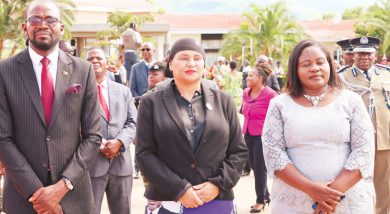Lending rates at 40-year low—RBM
Reserve Bank of Malawi (RBM) Governor Dalitso Kabambe has touted commercial bank’s base lending rates, as measured by reference rate at 12.3 percent for November 2019, saying they are at their lowest since the 1980s.
He said Malawi’s credit composition has now changed with wholesale and retail sector enjoying a lion’s share at 24.5 percent followed by agriculture at 21.9 percent despite the latter being Malawi’s mainstay.
Kabambe said this in Lilongwe on Tuesday during the official operationalisation of the Malawi Agricultural and Industrial Investment Corporation (Maicc), a development finance institution established under Public-Private Partnership arrangement.

He said commercial banks’ base lending rates have come down from a peak of 56.2 percent in 2001.
For a long time, high cost of finance has been singled out by the Malawi Confederation of Chambers of Commerce and Industry (MCCCI) as one of the challenges of doing business in Malawi.
But Kabambe boasted that in recent times, the cost of finance continues to ease in commercial banks and other financial institutions.
Financial market analysts attribute the recent softening in lending rates to recent successive cuts in policy rate, or the rate at which commercial banks borrow from the central bank as a lender of last resort.
This year alone, RBM has twice revised downwards the rate from 16 percent to 14.5 percent before effecting a further cut to 13.5 percent.
Currently, commercial banks base lending rates, now reference rates, are moving in line with changes in market rates of the 91-days Treasury bills, interbank rate, savings rate and Lombard Rate.
“Banks are also adequately capitalised, liquid and profitable. Non-performing loans or bad loans are also at their lowest at 4.3 percent. In addition, private sector credit is also steadily rising averaging 15.4 percent in 2019 up from a growth of 5.7 percent in 2018,” said Kabambe.
Similarly, the monetary policy chief said credit accessed through microfinance institutions has grown from K29 billion in 2016 to K46.83 billion in 2019.
However, Kabambe lamented that statistics show that only three percent of Malawians have access to formal financial credit, stressing that it will be good to see more credit going to the agriculture, manufacturing, mining, energy and tourism sectors, which are key sources of growth and job creation.
MCCCI president Prince Kapondamgaga is quoted as having said that the cost of borrowing in Malawi has remained structurally high and unresponsive to the actions of monetary authorities.
“Players in the financial sector unfortunately tend to exaggerate risks associated with lending,” he said.
Kapondamgaga said in view of such challenges, MCCCI has over the years lobbied for the establishment of a development bank and a specialised bank to serve the agriculture sector.
In this case, Maiic comes in handy as an institution that will provide long-terms financing to bankable projects, particularly in the agriculture sector.





